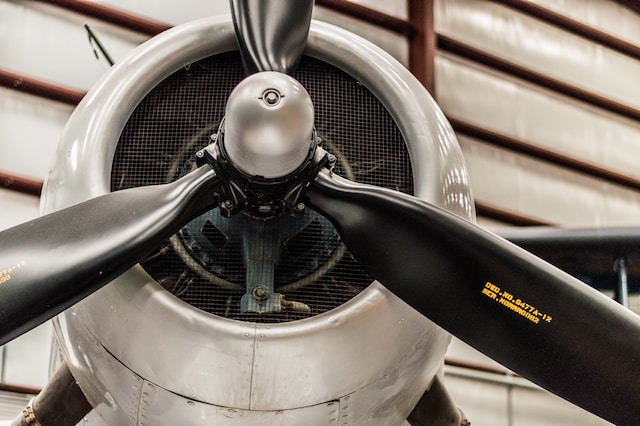Private Aviation, in terms of travel, is synonymous with luxury, convenience, privacy, exclusivity, and opulence. While the history of private aviation dates more than a century ago, it has evolved into one of the most exclusive activities in recent years. Not only does it reflect luxury, but the industry has also seen exponential growth in technology. Each era presented new advancements that have catapulted private aviation into the position we know today. In this article, we will unpack the history of private aviation.
The Early Pioneers
While no one could imagine that a private jet charter would be considered peak travel in 2023, the Wright brothers — Orville and Wilbur — created something groundbreaking when they first developed an aircraft. The brothers were the first to develop a powered, controlled, and sustained flight on 17 December 1903. Named the Kitty Hawk, the aircraft allowed the brothers to fly for 12 seconds, traveling 120 feet. This was the very first flight, and it was piloted by Orville. The next flight was equally successful, covering 852 feet in 59 seconds. Wilbur piloted the second flight. The Wright brothers gave birth to aviation and paved the way for the private aviation we know today.
Once aviation was proven possible, the emergence of barnstorming provided something unique. Barnstorming was a form of entertainment where pilots performed tricks while flying. This was particularly popular during the 1920s after World War I. Pilots who participated in the war and gained valuable flying hours and experience now turned to aviation as entertainment. They performed some jaw-dropping (for the time) aerobatic displays, stunt flying, and even some short flights for curious onlookers. The barnstormers would land their planes in massive open fields and charge onlookers a fee. This presented the realization that aviation would evolve beyond war into a fully-fledged commercial operation.
The Golden Age
The period between the world wars was known as the golden age of aviation. This is because this period saw an influx of technological improvements. A significant point of growth was the production of planes. It became more dependable, which would pave the way for increased production of airplanes. Furthermore, the positive knock-on effects of this new reliability meant that privately owned businesses started investing in aviation for business and leisure travel.
The wheels turned quite literally when one of the most famous and influential men of the time, Howard Hughes, decided to make a name for himself in the industry. The aerospace engineer, businessperson, philanthropist, filmmaker, investor, and pilot set massive strides in aviation and is still celebrated in 2023 for his contributions. On 13 September 1935, Hughes did the unthinkable and set a new speed record when he flew his H-1 Racer at 352 miles per hour. This cemented Hughes as a prominent figure in the aviation industry.
World War II also had a significant impact during the golden age. The development of faster and more powerful planes was groundbreaking at the time. Once the war concluded, a surplus of planes worldwide presented a unique opportunity. Private buyers would purchase the aircraft and modify them to suit their needs. And thus, private aviation was born.
The Rise of Private Jets
This was one of the more exciting periods in private aviation. During the 1950s and 1960s, the Jet Age was born with the introduction of jet airliners like the Boeing 707 and Douglas DC-8. Another revolution was the Learjet 23, which William Lear designed. It was seen as the pioneer of private aviation. These compact and fast jets could transport a limited number of people, and their exclusive nature meant they were typically used by business executives and high-net-worth people. 1964 was the year the Learjet 23 was introduced to the world. It made traveling more accessible to those who could afford it.
The Opulence of Private Aviation
Once the 1980s and 1990s rolled around, private travel emerged as the most exclusive travel method. The rich and famous of the time made perfect use of this. Celebrities, tycoons, and political figures enjoyed the privacy, luxury, and convenience of private travel. By the 1990s, two key jets emerged: the Boeing Business Jet and the Airbus Corporate Jet. Both offered travelers the opportunity to customize their spaces from fully equipped kitchens to spacious bedrooms; no expense was spared, and the opportunities were limitless.
Then a new type of private jet would take things a few steps further. The introduction of the Cessna Citation and Gulfstream meant that business travel was in for a real treat. These planes were more agile and were much smaller than their predecessors. Not only did these new planes offer all the luxury of the previous planes, but it also meant that these updated versions did not need a long runway for takeoff — making them ideal for smaller airports.
The New Millennium
Today, technology plays a pivotal role in private aviation. Private jet companies now offer more than before but still hold on to the exclusivity this field allows. Now, chartering private planes is much more accessible and available to many. The growth of this sector, coupled with the ongoing changes, has seen people from various social and economic brackets be able to enjoy the offering that is private aviation.
Conclusion
The Wright brothers were the early pioneers of aviation and provided the ideal blueprint on which aviation is based, but things have come a long way since then. World Wars I and II were also significant in the industry, especially in propelling technological development, and the surplus in planes from the war allowed business owners to purchase airplanes and modify them for commercial and private use. In the 1950s, the development of private planes was taking shape, and by the 1990s, private aviation was so exclusive that it was specifically catered to the rich and famous. Today, private aviation remains an iconic mode of transportation, but it is now available to everyone — especially those with a taste for luxury.







